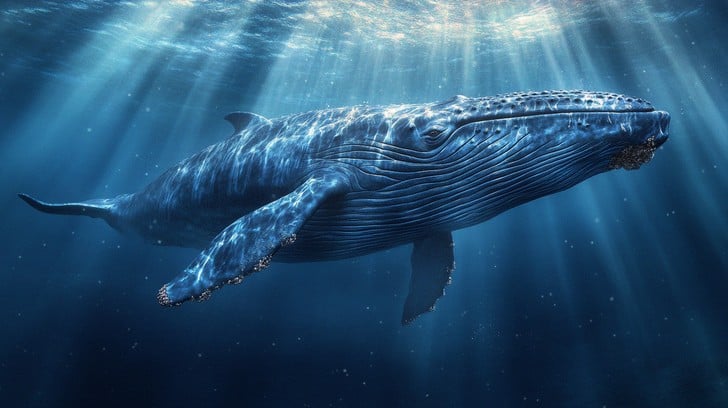
Source:https://stockcake.com/
The Blue Whaler, scientifically known as Balaenoptera musculus, is the largest animal to have ever existed on Earth. This magnificent marine mammal, with its colossal size and striking blue-gray coloration, occupies a unique space in the natural world and scientific studies. In this article, we will explore the special characteristics, abilities, challenges, and fascinating facts about the Blue Whaler that make it one of the most awe-inspiring creatures in the ocean.
What Makes the Blue Whaler Unique?
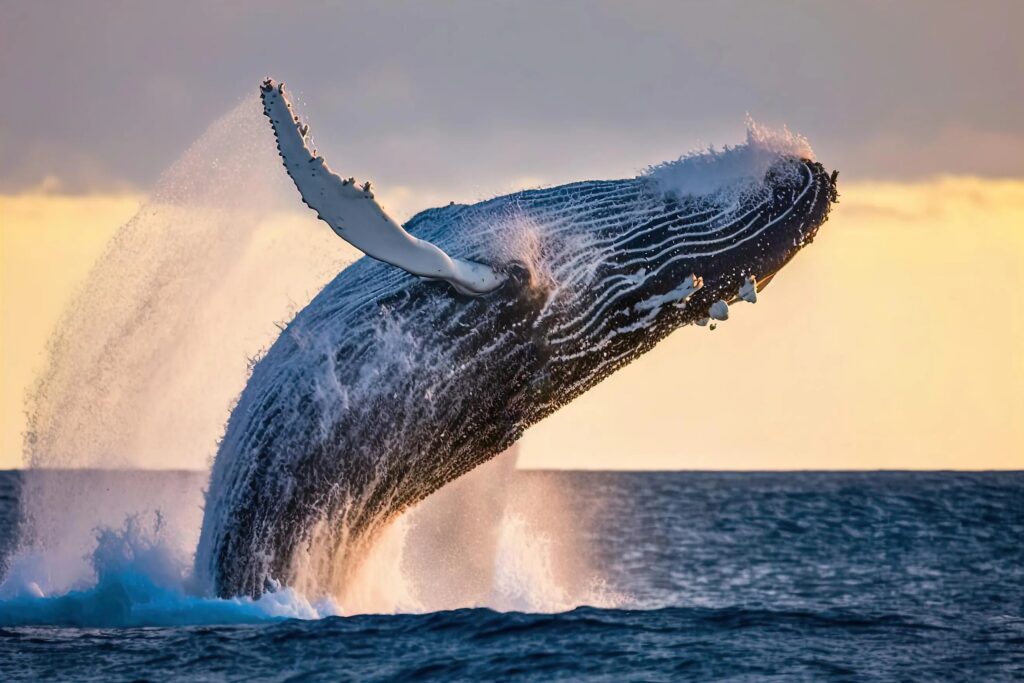
Source:https://spinnaker-watches.com/
The Blue Whaler is undeniably unique, not only because of its immense size but also due to its biology and behavior. These whales can grow to lengths of up to 100 feet (30 meters) and weigh as much as 200 tons, making them truly monumental. Their size alone sets them apart from all other animals on the planet, but there are additional remarkable features that define the Blue Whaler.
Impressive Physical Features
The body of the Blue Whaler is streamlined for efficient movement through the water. Its thick skin has a bluish-gray appearance, which appears blue when viewed from above the surface of the ocean. The underside of the whale has a lighter color, and its skin is often covered in barnacles and whale lice, giving it a unique texture. Its long, tapered body allows it to glide effortlessly through the ocean depths.
The Blue Whaler’s tail, or fluke, is wide and triangular in shape, capable of generating powerful propulsion. Its flippers, shorter than the body would suggest, mainly serve to steer and maintain stability, rather than to assist with movement. The whale’s dorsal fin is small and located near the tail, serving as a secondary feature in its streamlined body.
The Massive Heart of the Blue Whaler
One of the most astonishing features of the Blue Whaler is its heart, which is the size of a small car. Weighing around 600 kilograms (1,300 pounds), this massive organ pumps vast quantities of blood through the whale’s enormous body. The powerful heart enables the Blue Whaler to sustain its immense size and travel with remarkable efficiency across the oceans.
Special Abilities of the Blue Whaler
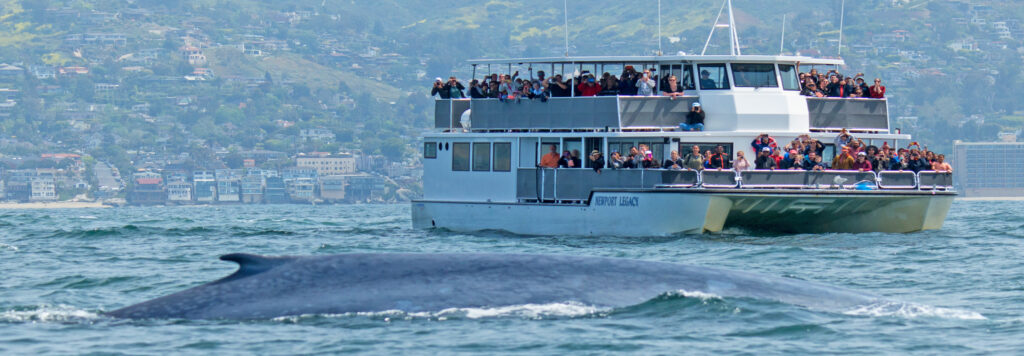
Source:https://newportwhales.com/
The Blue Whaler is not just known for its size; it is also equipped with remarkable abilities that help it survive and thrive in the vast ocean.
Echolocation and Communication
Although Blue Whalers do not use traditional echolocation like other marine species, they communicate using low-frequency sounds. These vocalizations can travel for hundreds of miles underwater, helping them maintain contact with other whales, especially when in deep oceanic waters. The Blue Whaler’s low-frequency calls are among the loudest sounds produced by any animal on Earth.
The deep and low-pitched vocalizations of the Blue Whaler can be detected across great distances, aiding in navigation, mating, and social interactions. These sounds also play a crucial role in their ability to navigate the vast oceans.
Feeding and Energy Consumption
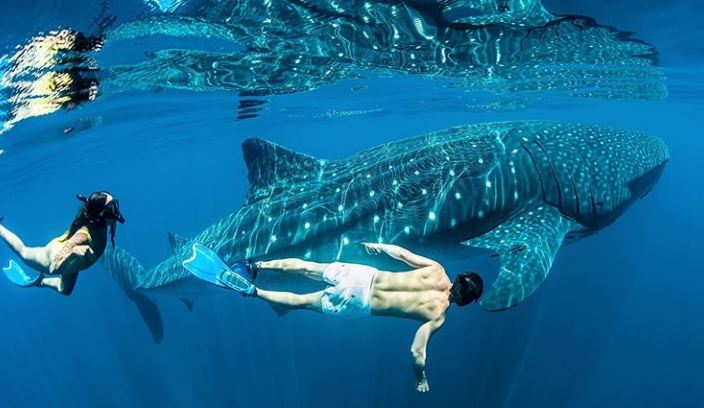
Source:https://bajasharkexperience.com/
Despite their colossal size, Blue Whalers primarily feed on small organisms known as krill. During feeding season, they consume up to 4 tons (3,600 kilograms) of krill per day. Using their baleen plates—comb-like structures in their mouths—they filter krill from the surrounding water. This method of filter feeding allows them to consume large quantities of food quickly.
The feeding behavior of the Blue Whaler is incredibly efficient. They dive deep into the ocean and can remain submerged for up to 30 minutes before resurfacing for air. Their enormous mouths can take in vast amounts of water, and with a simple closure of the mouth, they filter out the krill from the water.
Migration Patterns and Navigation
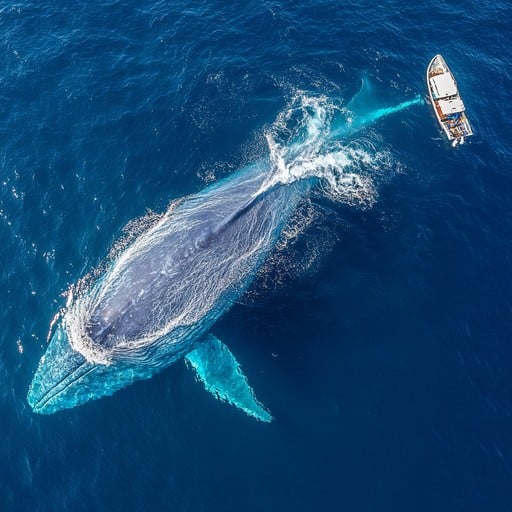
Source:https://stockcake.com/
The Blue Whaler also undertakes remarkable long-distance migrations, traveling thousands of miles between its feeding grounds in polar waters and its breeding grounds in tropical or subtropical regions. These migrations are believed to be driven by food availability and ideal breeding conditions.
The Blue Whaler navigates these vast distances using highly developed senses. While it does not rely on echolocation, the whale can detect sound waves traveling through the water, which helps with navigation and communication. Researchers believe that the Blue Whaler may also use the Earth’s magnetic field in combination with sound waves to guide its migrations.
Weaknesses of the Blue Whaler
Despite their immense size and power, Blue Whalers are not immune to the dangers of their environment. They face numerous threats that can affect their survival.
Human Impact and Threats
One of the most significant threats to the Blue Whaler is human activity. Over the years, hunting for whale oil and other parts caused their population to plummet. Although commercial whaling has decreased, other human activities, such as shipping traffic and underwater noise pollution, continue to negatively impact these majestic creatures.
The loud sounds produced by ships and industrial activities interfere with the Blue Whaler’s ability to communicate and navigate, leading to disorientation and, in some cases, collisions with ships. Marine pollution, including plastic waste and chemical contaminants, also poses risks to the health of these whales.
Vulnerability to Climate Change
Like many marine species, Blue Whalers are vulnerable to the impacts of climate change. Rising ocean temperatures and shifting food patterns can disrupt the availability of krill, their primary food source. A reduction in krill populations due to environmental changes could result in a food shortage for the Blue Whaler, endangering its survival.
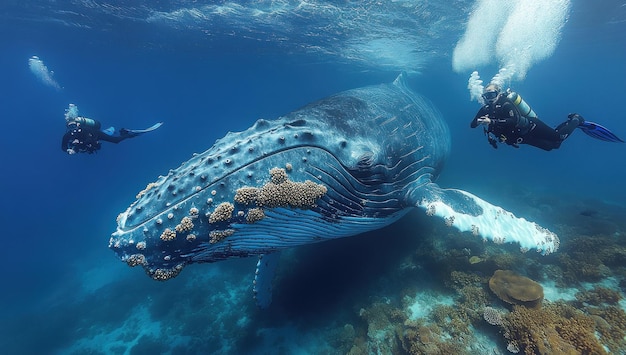
Source:https://www.freepik.com/
Fascinating Facts About the Blue Whaler
The Blue Whaler is a truly extraordinary creature, and its existence is filled with captivating details that underscore its magnificence.
- Largest Animal on Earth: The Blue Whaler is the largest animal to have ever lived, surpassing even the largest dinosaurs.
- Longevity: Blue Whalers can live for 70 to 90 years, with some individuals known to reach over 100 years old.
- Breeding: Female Blue Whalers give birth to one calf every two to three years. Calves weigh around 2 to 3 tons and are about 23 feet (7 meters) long at birth.
- Enormous Consumption: Blue Whalers can consume up to 4 tons of krill daily during feeding seasons.
- Deep Diving: Blue Whalers can dive to depths of over 500 meters (1,640 feet) in search of food, often staying submerged for long periods.
The Blue Whaler is an iconic species that captivates our imagination due to its sheer size, extraordinary abilities, and its vital role in the marine ecosystem. As the largest animal on Earth, it serves as a remarkable example of nature’s ingenuity. While they face numerous challenges, conservation efforts have supported a recovery in their population in recent years. By better understanding their unique traits, special abilities, and vulnerabilities, we can continue to appreciate and protect these magnificent creatures for future generations.












